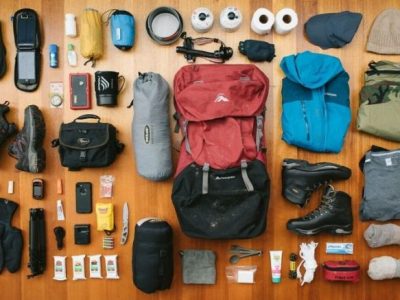Leatherwork merit badge projects are a testament to the creativity and skill of young artisans. This comprehensive guide delves into the world of leatherworking, providing step-by-step instructions, expert tips, and inspiring project ideas to help you earn your merit badge with distinction.
From choosing the right materials to mastering essential techniques, this guide covers everything you need to know to create stunning leatherwork projects that will impress your peers and leave a lasting legacy.
Introduction
The Leatherwork merit badge program is designed to teach Scouts the basics of leatherworking, a traditional craft that involves working with leather to create useful and decorative items. Through this program, Scouts will develop skills in selecting, cutting, tooling, and finishing leather, enabling them to create their own unique leatherwork projects.The
purpose of the Leatherwork merit badge is to provide Scouts with an opportunity to learn and practice the art of leatherworking. By completing the requirements of the merit badge, Scouts will gain an understanding of the history, tools, and techniques involved in leatherworking, and they will develop the skills necessary to create their own leatherwork projects.To
earn the Leatherwork merit badge, Scouts must complete the following requirements:
- Demonstrate an understanding of the history and traditions of leatherworking.
- Identify and safely use the basic tools and materials used in leatherworking.
- Plan and create two leatherwork projects, one of which must be a useful item.
- Demonstrate proper care and maintenance of leatherwork tools and materials.
Types of Leatherwork Projects
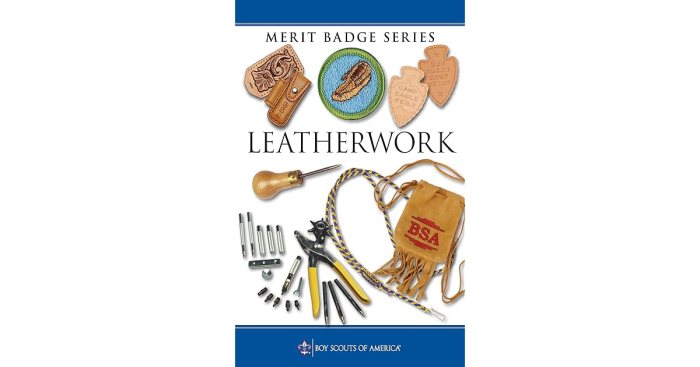
Leatherwork is a versatile craft that can be used to create a wide variety of items, from simple keychains to complex saddles. The type of project you choose will depend on your skill level, the tools you have available, and the amount of time you want to invest.
Here are a few different types of leatherwork projects that can be completed for the merit badge:
Simple Projects
- Keychains
- Bookmarks
- Coasters
- Wallets
These projects are a great way to get started with leatherwork. They are relatively easy to make and do not require a lot of specialized tools.
Intermediate Projects
- Belts
- Bags
- Holsters
- Knife sheaths
These projects are more challenging than simple projects, but they are still within the reach of most beginners. They require some basic leatherworking skills and tools, but they are not too difficult to master.
Advanced Projects
- Saddles
- Tack
- Armor
- Furniture
These projects are the most challenging of all, and they require a high level of skill and experience. They are not suitable for beginners, but they can be a rewarding challenge for experienced leatherworkers.
No matter what type of project you choose, leatherwork is a great way to learn a new skill and create something unique and personal.
Materials and Tools: Leatherwork Merit Badge Projects
Leatherwork requires a range of materials and tools to create durable and aesthetically pleasing products. Selecting high-quality materials and tools is crucial for successful leatherworking projects.
Essential Materials
- Leather:The primary material for leatherwork, available in various types (full-grain, top-grain, split leather) and colors.
- Thread:Strong and durable thread specifically designed for leatherwork, available in different thicknesses and colors.
- Edge Dye:Used to finish and seal the edges of leather pieces, enhancing durability and aesthetics.
- Leather Conditioner:Maintains the leather’s suppleness and prevents cracking.
Essential Tools
| Tool | Purpose | Use |
|---|---|---|
| Awl: | Creates holes for stitching. | Hold the awl perpendicular to the leather and push through. |
| Leather Needle: | Used with thread to stitch leather pieces together. | Thread the needle and use a thimble to protect your finger. |
| Stitching Pony: | Holds leather securely while stitching. | Clamp the leather into the pony and adjust the tension. |
| Leather Knife: | Cuts and shapes leather. | Hold the knife at a 45-degree angle and cut along the desired line. |
| Edge Beveler: | Bevels the edges of leather to create a smooth finish. | Hold the beveler against the edge and run it along the leather. |
| Burnishing Tool: | Smooths and polishes leather edges. | Rub the burnishing tool along the edge using a circular motion. |
Tips for Selecting and Purchasing
* Choose leather based on the project’s purpose and desired aesthetics.
- Opt for high-quality thread that won’t break easily.
- Use edge dye that matches the leather’s color for a seamless finish.
- Select tools made from durable materials like steel or stainless steel.
- Consider the size and shape of the tools for comfort and ease of use.
Safety Precautions
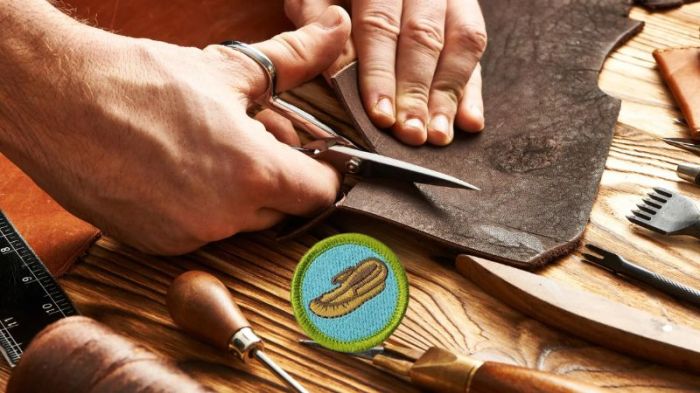
When working with leather, it is important to follow certain safety precautions to avoid potential hazards. These hazards include sharp tools, chemicals, and potential allergens.
To ensure a safe working environment, it is essential to wear appropriate personal protective equipment (PPE) such as safety glasses, gloves, and a dust mask. Additionally, always work in a well-ventilated area to minimize exposure to fumes and dust.
Sharp Tools, Leatherwork merit badge projects
Leatherworking involves the use of sharp tools such as knives, scissors, and awls. Always handle these tools with care and keep them sharp to minimize the risk of accidents. Make sure to cut away from your body and use a cutting mat to protect your work surface.
Chemicals
Leatherworking often involves the use of chemicals such as dyes, finishes, and adhesives. These chemicals can be harmful if ingested, inhaled, or absorbed through the skin. Always read and follow the manufacturer’s instructions carefully and wear appropriate PPE when working with chemicals.
Potential Allergens
Some people may be allergic to certain types of leather or the chemicals used in leatherworking. If you experience any skin irritation or respiratory problems, stop working immediately and seek medical attention.
Design and Planning
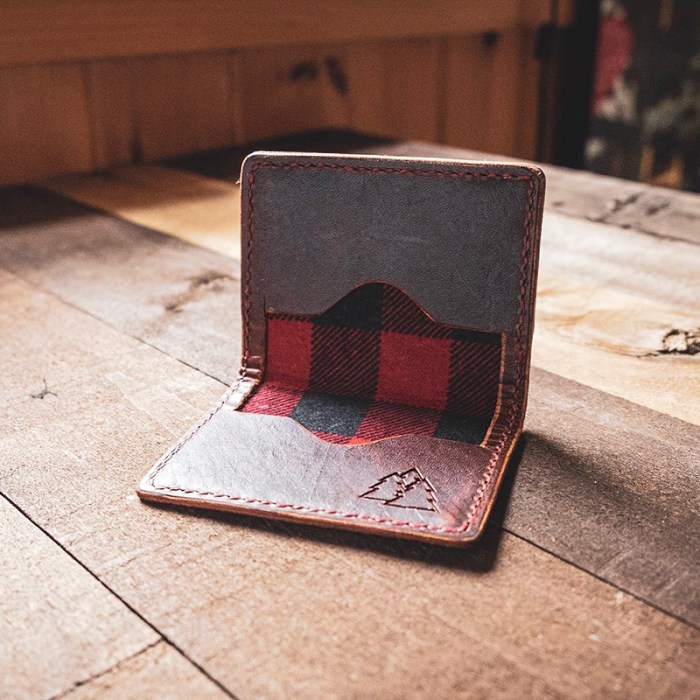
Design and planning are crucial in leatherwork as they lay the foundation for a successful project. By carefully considering the design and planning, you can ensure the finished product meets your expectations and is both functional and aesthetically pleasing.
Developing a Design
When developing a design for your leatherwork project, consider its purpose, style, and personal preferences. Sketch out your ideas, experiment with different shapes and sizes, and research existing leatherwork designs for inspiration.
Planning the Project
Once you have a design, plan the steps involved in creating your project. This includes determining the materials and tools needed, estimating the time and cost, and identifying any potential challenges or obstacles. By planning ahead, you can avoid setbacks and ensure a smooth execution of your project.
Construction Techniques
Leatherwork involves various construction techniques to create functional and aesthetically pleasing items. These techniques include cutting, stitching, gluing, and molding.
Before embarking on any construction technique, it’s crucial to understand the properties of the leather being used. Different types of leather have varying thicknesses, textures, and flexibilities, which influence the choice of construction technique.
Cutting
Cutting leather accurately is essential for a professional finish. Use a sharp knife or rotary cutter and a cutting mat to ensure clean, precise cuts. For intricate designs, consider using a leatherworking template or pattern.
Stitching
Stitching is a fundamental technique used to join pieces of leather together. There are various stitching methods, including hand stitching, machine stitching, and saddle stitching. Each method has its advantages and is suitable for specific projects.
Gluing
Gluing is an effective method for attaching leather pieces that cannot be stitched or when a seamless bond is desired. Use leather-specific adhesives that provide strong and flexible bonds.
Molding
Molding is a technique used to shape leather into three-dimensional forms. It involves wetting the leather and shaping it over a mold or form. Once the leather dries, it retains the desired shape.
Finishing Techniques
Finishing techniques play a crucial role in enhancing the appearance and durability of leatherwork projects. By applying the right techniques, you can achieve a professional-looking finish that will make your projects stand out.
There are several finishing techniques available, each with its unique benefits and applications. Some of the most common techniques include:
Burnishing
Burnishing involves rubbing the edges of leather to create a smooth, polished finish. This technique is often used on belts, straps, and other items that require a refined look.
To burnish leather, you will need a burnishing tool, such as a wooden dowel or a piece of glass. Apply a small amount of water to the edge of the leather and rub it vigorously with the burnishing tool. Continue rubbing until the edge becomes smooth and shiny.
Edging
Edging involves applying a thin strip of leather or other material to the edges of your project. This technique helps to protect the edges from wear and tear and gives your project a more finished look.
To edge leather, you will need a piece of edging material that is slightly wider than the thickness of your leather. Apply a thin layer of adhesive to the back of the edging material and press it firmly into place on the edge of the leather.
Trim any excess edging material.
Staining
Staining is a great way to add color and depth to your leatherwork projects. There are a variety of leather stains available, so you can choose the one that best suits your needs.
To stain leather, apply a thin coat of stain to the surface of the leather and allow it to dry. You can then apply additional coats of stain to achieve the desired color.
Sealing
Sealing is an important step in protecting your leatherwork projects from the elements. There are a variety of leather sealants available, so you can choose the one that best suits your needs.
To seal leather, apply a thin coat of sealant to the surface of the leather and allow it to dry. You can then apply additional coats of sealant to achieve the desired level of protection.
Project Showcase
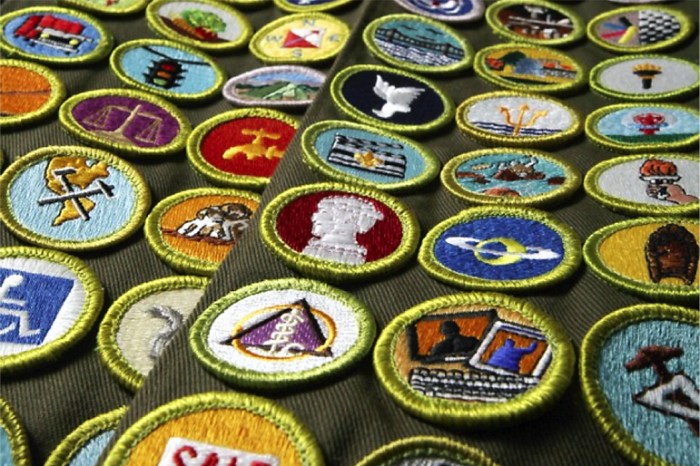
This gallery showcases completed leatherwork projects, providing inspiration and demonstrating the diverse applications of leathercraft. Each project description includes details about the leather type, construction techniques, and finishing techniques used.
The gallery includes links to project tutorials or patterns, allowing aspiring leatherworkers to recreate these projects and further develop their skills.
Completed Projects
- Leather Wallet: Crafted from supple cowhide leather, this bifold wallet features intricate hand stitching, a secure snap closure, and multiple card slots. Tutorial
- Leather Belt: Made from durable bridle leather, this belt showcases a classic design with a sturdy buckle and adjustable holes. Pattern
- Leather Journal Cover: Created from antique-look goat leather, this journal cover protects and personalizes a notebook, featuring embossed Celtic knotwork and a secure strap closure. Tutorial
- Leather Tool Roll: Crafted from sturdy canvas and oiled leather, this tool roll keeps essential tools organized and protected. Pattern
- Leather Backpack: Made from high-quality vegetable-tanned leather, this backpack features adjustable straps, multiple pockets, and a rugged construction. Tutorial
Resources
Enrich your leatherwork knowledge by exploring the vast resources available.
Immerse yourself in the world of leatherwork with a plethora of resources, including books, websites, and organizations dedicated to this craft.
Books
- Leatherwork: A Beginner’s Guideby Al Stohlman
- The Art of Leatherworkingby Oswald J. Werner
- Leathercraft Techniques and Projectsby Judith M. Johnson
Websites
- Tandy Leather Factory: https://www.tandyleather.com/
- Leatherworker.net: https://www.leatherworker.net/
- Leathercraft Central: https://www.leathercraftcentral.com/
Organizations
- Society of Leather Artisans (SLA): https://www.societyofleatherartisans.org/
- Leather Crafters and Saddlers Journal: https://www.leathercraftersjournal.com/
Local Classes and Workshops
Elevate your leatherworking skills by attending local classes or workshops. Check community centers, craft stores, and art schools for upcoming events.
Online platforms like Eventbrite and Meetup can also provide information on leatherwork classes in your area.
Final Summary
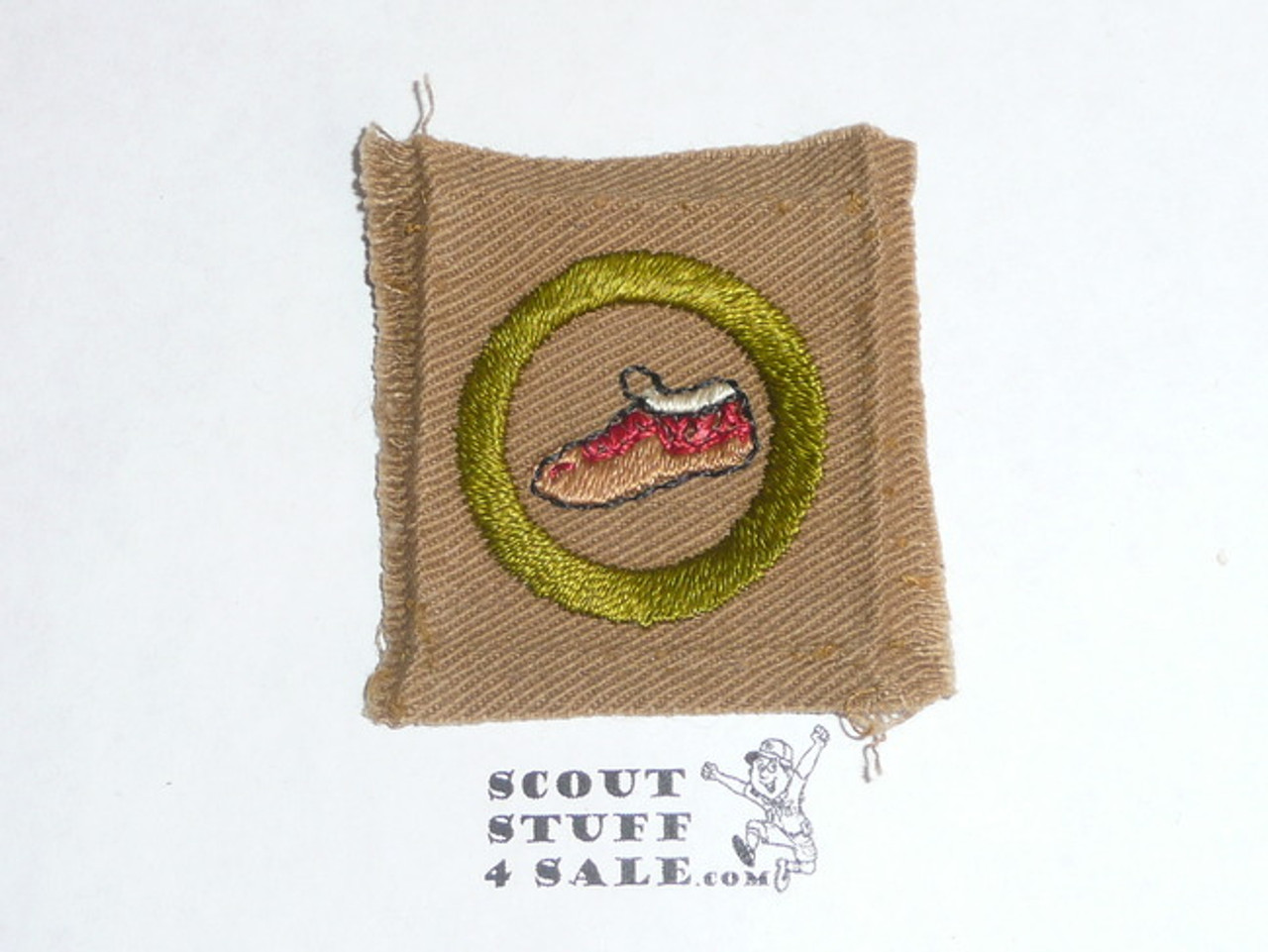
Embark on this leatherworking adventure and discover the joy of creating unique and functional items that will be treasured for years to come. With Leatherwork merit badge projects as your guide, you’ll become a master craftsman, leaving an imprint of your creativity on the world.
Questions Often Asked
What are the requirements for earning the Leatherwork merit badge?
To earn the Leatherwork merit badge, you must complete a series of projects that demonstrate your proficiency in leatherworking skills, including selecting and preparing leather, using tools safely, and applying finishing techniques.
What types of leatherwork projects can I complete for the merit badge?
There are many different types of leatherwork projects you can complete for the merit badge, such as wallets, belts, keychains, and jewelry. You can choose projects that match your interests and skill level.
Where can I find resources for further learning about leatherwork?
There are many books, websites, and organizations dedicated to leatherwork. You can also find local leatherwork classes or workshops to help you develop your skills.

